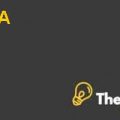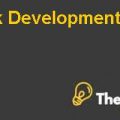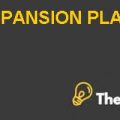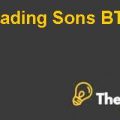Crown, Cork & Seal in 1989 Case Study Solution
The historic financial data of the Crown, Cork and Seal determines that the company consistently performing well in the metal container industry. The net sales are growing annually with the average growth rate of 6%, which indicates that the performance of the company is better than its competitor.
The increasing sales trend in the era from 1956-1979 provided the company the opportunity to enhance its profitability through adapting better operating efficiencies in order to reduce operating costs. The industry growth is very much attractive for the existing market players as they can grow their businesses. However, the company has low return on sales and return on asset due to to the higher operational costs facing by the company.
At the growth stage of the company, the company has to face the higher fixed cost, which will reduce with time as the level of sales volume would increase, due to which the per unit cost will decrease. In addition to this, the cost of goods sold ratio against the sales indicates the stability, which determines that the company has weak negotiation level with its supplier and value chain players.
The company could reduce its cost of sale through inclusion of better terms in procurement contracts or deals. Moreover, the ratio of sales and admin expense to the revenue shows a declining trend which is positive for the company as the lower operating expenses will enhance the profitability.
Furthermore, the sudden increase in interest expense in the years from 1977 to 1979 although did not heavily affect the return for the shareholders due to the reduction in operating expenses. In 1956, the current ratio of the company was very high, which indicates that the company intended to face less exposure to the risk and retain sufficient cash flows for the short term commitment however, the situation will change dramatically with time as the current ratio reduce to 1.57 in 1988, which is quite reasonable level because at this level, the company made heavy investments in long term assets which generated future cash flows.
Lastly, the lower debt to equity and debt to capital ratio indicates that the financial strength of the company is very strong and in the future, the company can raise additional finances from lenders or investors in the case of adverse situations. However, in 1956, the debt level of the company was significant and the financial risk was also very high, but the continuous heavy repayment of debt to the company reduced the debt levels. The reduction in debt level would increase the cost of capital of the firm as the equity finance is an expensive source of finance as compare to debt.
Industry Structure:
The metal industry is dependent on small number of players, which dominate the market substantially. The large companies have strong financial as well as non-financial reserves available. Financial reserves indicate that the companies have big capital investment in the longer term assets, which enables them to produce at the lower operating costs. On the other hand, non-financial reserves include the customer confidence and loyalty over their brands, and that they are reluctant to switch their buying from one to another.
Pricing:
The Can market is very competitive due to the commoditization of the cans, which has resulted in lower cost of product, but at the same time the competitor reduced their prices to attractive major orders, which resulted in more profitability. The can producers generate small sales volume based on the guaranteed prices, which enhances their exposure towards the material prices fluctuation such as aluminum prices.
The can producers could reduce their material risk fluctuation through appropriate hedging techniques. The enhancement in production capacity would lead the competitors to produce their cans in lower operating cost, and in addition they can take initiatives to sell their products in large quantity with discounts. The pricing scenario in the industry provides the takeaway to the company, which determines that the company has to formulate better pricing strategy in order to maintain and attract new customers.
Crown, Cork & Seal in 1989 Harvard Case Solution & Analysis
Porter Five Forces:
Bargaining Power of Customers:
The Crown, Cork and Seal company faces higher bargaining power of customers as the number of customer are very few and the company’s revenue depends on smaller number of customers. The customers demand for higher competitive prices, which have to be provided by the company in order to retain the customer, and in case the company refuses to do so, the customers will switch to another can producer. The buyers of the company are concerned regarding the quality of the product in a situation where the quality level reduces; the buyers will reduce the order size in the future, which would reduce the future revenue of the company............
This is just a sample partial case solution. Please place the order on the website to order your own originally done case solution.









